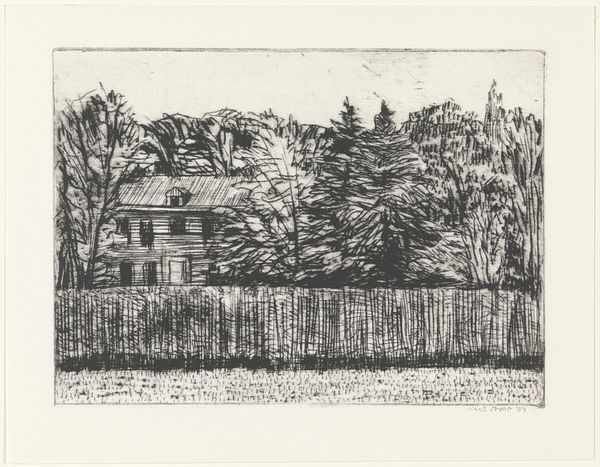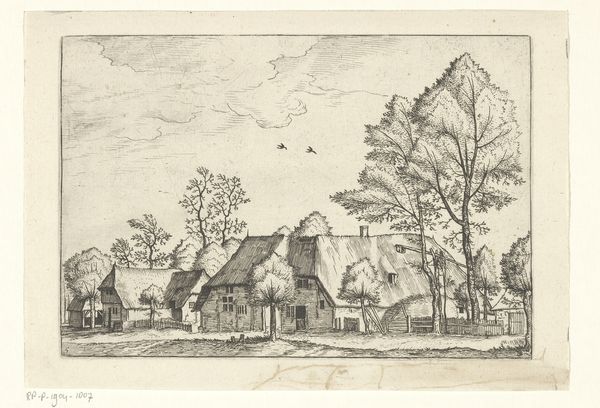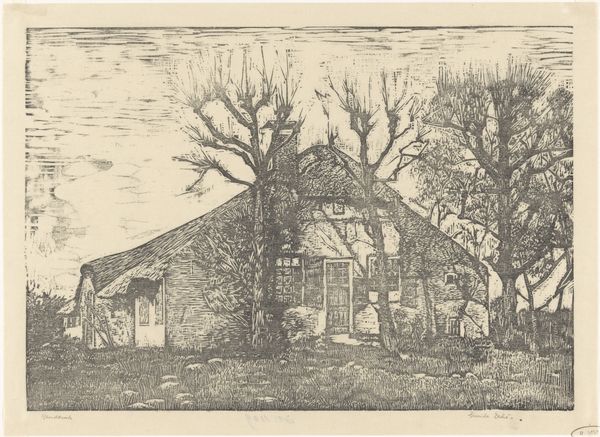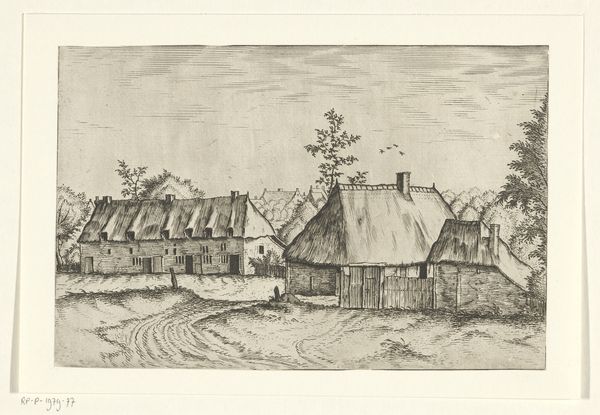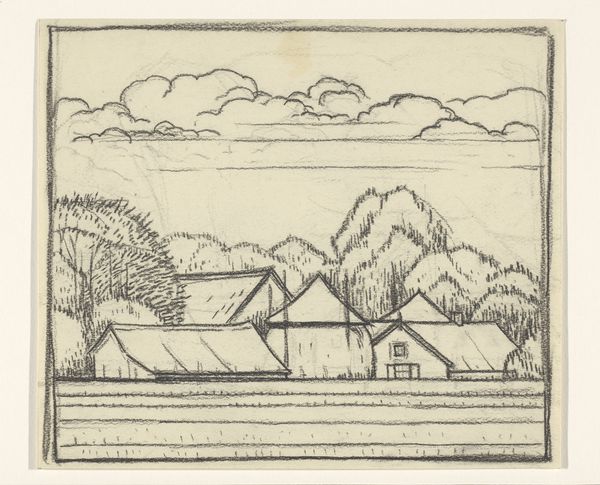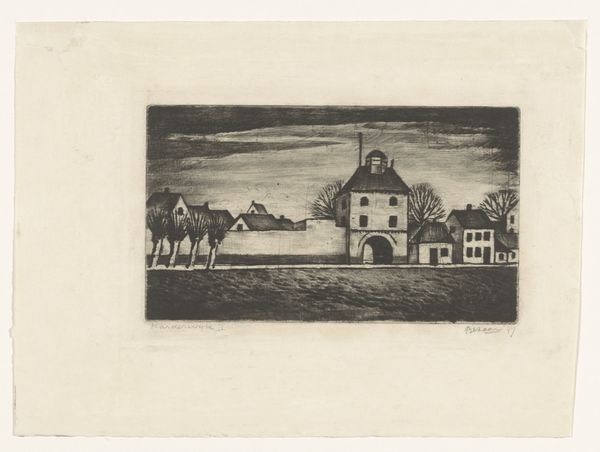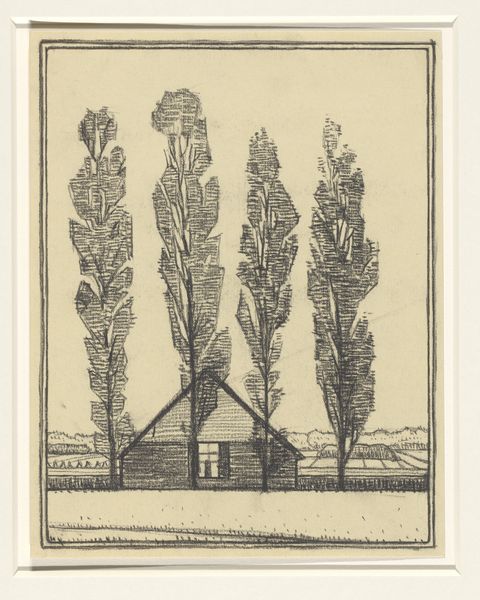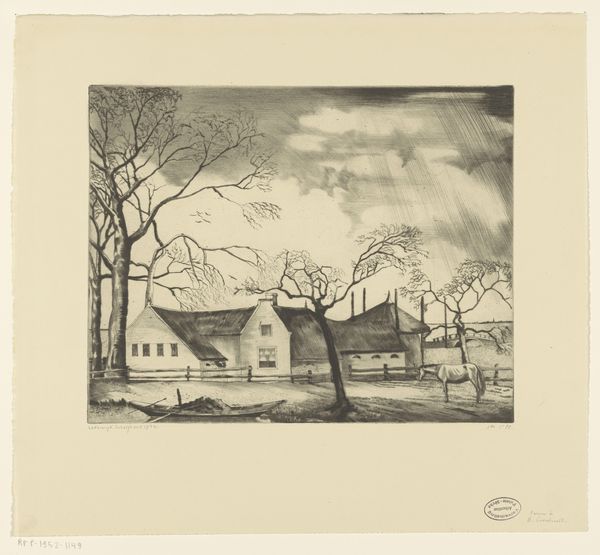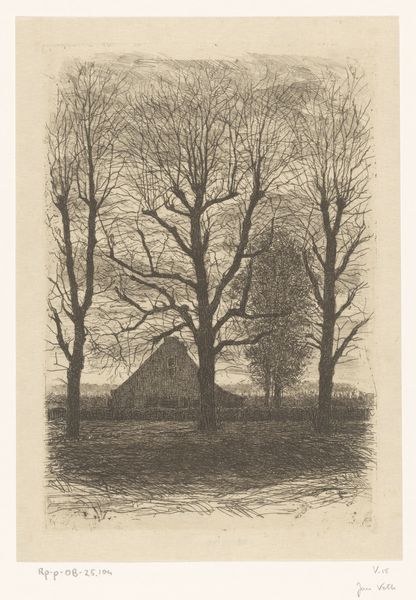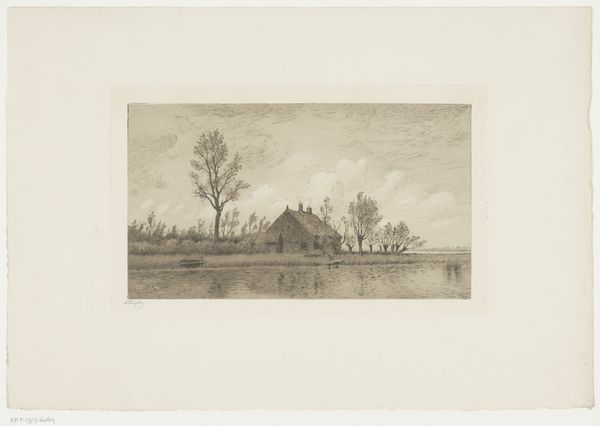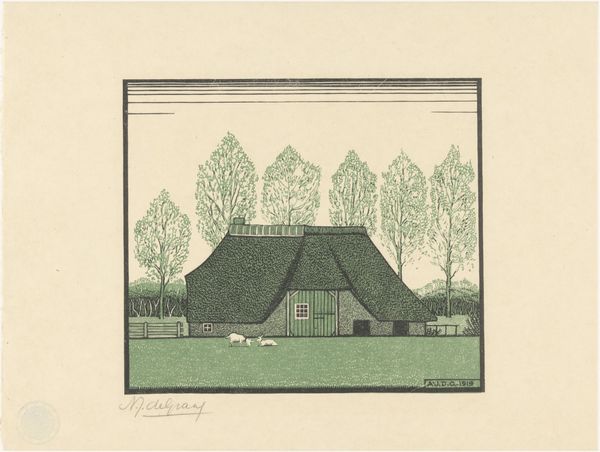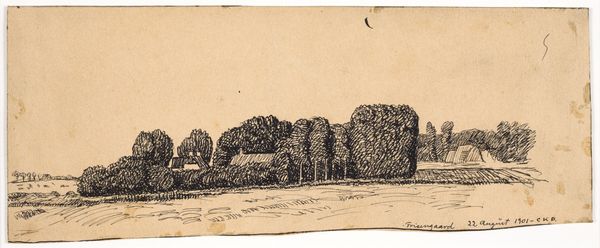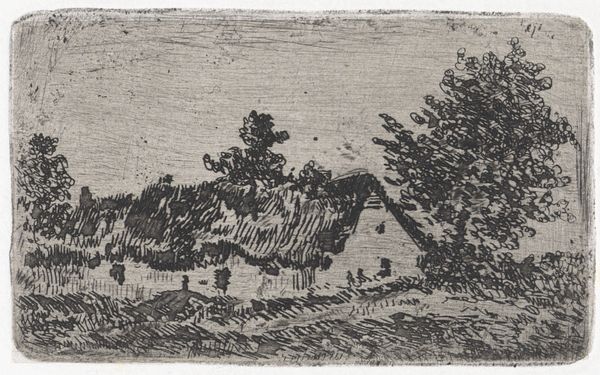
drawing, paper, ink
#
drawing
#
landscape
#
paper
#
ink
#
line
Dimensions: height 193 mm, width 240 mm
Copyright: Rijks Museum: Open Domain
Julie de Graag crafted this evocative woodcut, titled "Boerderij," around 1919, a scene dominated by the archetypal image of a farmhouse amidst a stark landscape. The farmhouse, a symbol of shelter, family, and the cultivation of life, emerges from a lineage that stretches back to antiquity. The roof over our heads: its protective presence reverberates through history, from the humble dwellings depicted in ancient Egyptian art to the grand villas of the Roman Empire. Like the hearth, it embodies the universal human desire for a haven against the elements. The bare trees, with their stark, reaching branches, evoke the cyclical nature of life and death, mirroring motifs found in Northern Renaissance art, where barren trees symbolize mortality and the transience of earthly existence. Consider the powerful contrast here: the solid, grounded structure of the farmhouse juxtaposed with the ethereal quality of the bare trees, a potent reminder of the ever-present tension between permanence and decay. Through the collective memory, this simple image taps into our deepest fears and longings, engaging us on a primal level. This symbolic tableau continues to resurface, evolving, and adapting across different epochs.
Comments
No comments
Be the first to comment and join the conversation on the ultimate creative platform.
